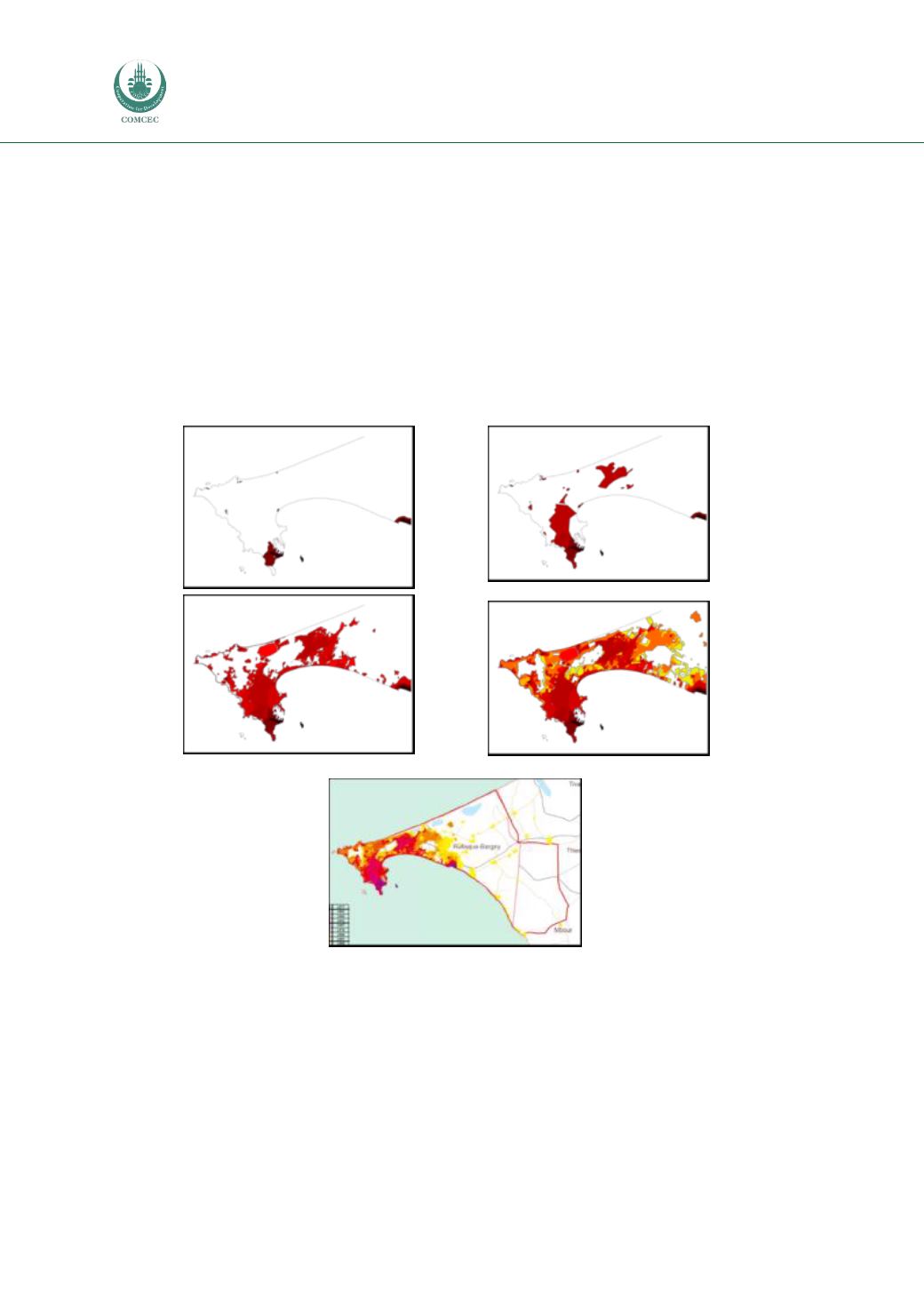

Urban Transport in the OIC Megacities
120
4.3.
Dakar
4.3.1.
Urban background
Dakar is the capital and biggest city of Senegal, located on the Atlantic coast, on the Cap Vert peninsula.
The city is the administrative and economic centre of the country with a population of 3 million, or
23% of the national population. The city has experienced quick population growth after WWII, when
its population was only 135,000. The expansion of the city inevitable happened to the east, given the
geomorphology of the region (Figure). It is estimated that the population of Dakar will reach 5 million
by 2025. A big part of the population is expected to be economically active as almost 60% of the
citizens in Dakar are below 25 years old, with an average age of 23.6 years.
Figure 53: From top to the right: The region of Dakar in 1900 (100,000 population), 1967 (500,000
population), 1986 (1.25 million population) and 2013 (3 million population (JICA, 2014).
Transport network and infrastructure
The city is now experiencing the impacts of unbalanced urban development, physical separation of
activities, primacy and monocentricity. The movement of public transport, private vehicles, taxis,
pedestrians and non-motorized vehicles (bicycles and animal drawn vehicles) is directed to the
Plateau area throughout the day where streets are empty during non-working hours. The congestion
on the streets is exacerbated by the completely unregulated modal mix on the streets which makes
traffic flow slower and irregular as none of the modes is prioritised. The ubiquity of street markets,
vendors and informal activities are also occupying a big part of the street space and contributing to
the mix of users. The interaction of slow and fast modes reduces the overall performance of the streets
and although flows are better on higher speed roads, the coexistence of pedestrians and vehicles is
still frequent.

















